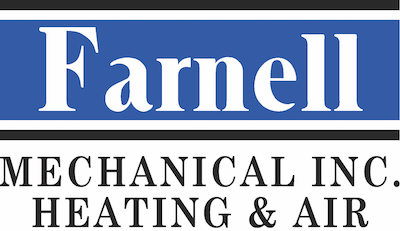
The Nest thermostat is one of the best-selling smart thermostats you can buy. And for good reason. It picks up on your temperature preferences and makes an energy-efficient schedule to match. And by geofencing with your phone, the Nest Learning Thermostat and Nest E realize when you’re at your house or away and can adjust temps to help you save even more.
The Nest works with a full range of 24-volt heating and cooling systems, but it’s always a smart idea to use the Nest thermostat compatibility checker before purchasing one. Don’t forget to contact your energy company for valuable rebates, as you could be able to get a Nest for free or close to it.
Once you’ve made sure it’s compatible, you can either install it without help or call a HVAC specialist like Farnell Mechanical, Inc.. If you’re putting it in on your own, you’ll spot a terminal for the C-wire, or common wire. This wire is solely used for powering your thermostat. If your house or HVAC system is older, you might not have one of these wires. In most cases, Nest says this isn’t a problem because the thermostat can get adequate power from other heating and cooling wires.
In some cases, your heating and cooling system could require that C-wire. And here’s why.
Why Your Nest Keeps Losing Power and Other Problems
The Google Nest Thermostat is better than outdated programmable thermostats that have a combination of wiring and AA batteries for power. It uses a rechargeable lithium-ion battery and wiring to connect to Wi-Fi, power its digital display and run your heating and cooling system.
8 Common Nest Thermostat Problems
If it can’t receive adequate power, Nest says you might have some of these troubles:
- Short battery life.
- Thermostat motion sensing is disabled.
- Your thermostat sometimes disconnects from Wi-Fi.
- Your system suddenly turns on or off, or won’t shut off.
- Your system is producing odd noises, like chattering, stuttering, clicking or thumping.
- Heating or cooling is short cycling, or constantly turning on and off in a short period of time.
- There is a delay notice on your Nest thermostat’s screen, like “heating is delayed for 2:30 minutes.”
- The system fan is constantly working, won’t turn on or turns off and on repeatedly in a short period of time.
You could believe something is wrong with your heating and cooling system, but if you just installed the Nest, we recommend you check your thermostat initially. This is especially true if the weather is moderate, and you haven’t been relying on your heat or air conditioning frequently.
Our Specialists Can Solve Nest Thermostat Issues
If you’ve attempted Nest thermostat troubleshooting on your own but can’t fix the problem, a smart thermostat pro such as one from Farnell Mechanical, Inc. can provide support. We can pinpoint the problem and put in a C-wire, if required.
Smart thermostats like the Nest are created to make your life simpler, with automatic energy-efficient programming and the ability to monitor settings while you’re out. It’s a time-consuming experience when yours won’t work like it should, but our heating and cooling experts at Farnell Mechanical, Inc. can resolve the issue in no time.
If you’re experiencing odd heating and cooling behavior with your new Nest, call us at 334-524-2458 to book your appointment today.
